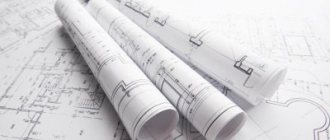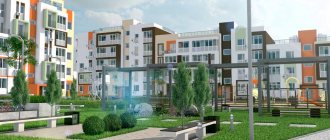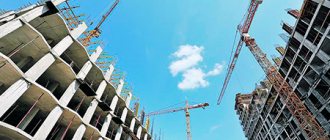Construction of capital buildings without obtaining permission for them can only be started if this permission is not required.
The list of such structures and buildings is specified in Part 17 of Art. 51 Civil Code of the Russian Federation. Construction work begun without obtaining permission in other cases entails liability under Article 9.5 of the Code of Administrative Offenses of the Russian Federation.
This article provides for the imposition of an administrative fine for violators: from 2 thousand rubles (for individuals) to a million rubles (for legal entities).
Is it possible to build a house without a building permit, what will happen if you build it? You will find answers to questions in the article.
Unauthorized construction
The concept of unauthorized construction is regulated by Article 222 of the Civil Code of the Russian Federation. It is subject to demolition or bringing it to the standards regulated by construction rules and regulations that are related to development (Civil Code of the Russian Federation, Article 222).
Demolition or bringing to standards is paid for by the person who built the capital structure, and if the identity of the builder is not established, then the payment comes from the pocket of the owner/tenant of the land plot.
A structure is not recognized as an unauthorized construction if it was built in violation of the peculiarities of the use of the site, which the owner of this site did not know about and could not know about.
Signs of unauthorized construction:
- Placed on a site where construction does not imply the construction of such a building.
- Placed on a site that is not provided in accordance with the established procedure.
- Constructed without obtaining permission or in violation of urban planning regulations.
- It was created on a site that ignored the legal restrictions on its use.
In order for a structure to be recognized as an unauthorized construction, it must meet at least 1 of the above criteria.
What happens if you build it: responsibility and consequences
Responsibility for the construction of an unauthorized structure may arise under several articles of the Code of Administrative Offenses of the Russian Federation:
| Article | Responsibility | ||
| Individual | Executive | Legal face | |
| 9.5 | Fine 2-5 tr. | Fine 20-50 t.r. | Fine 500 rub. – 1 million rubles or suspension of activities for up to 90 days |
| 7.1. if the cadastral value is established | Fine 1-1.5%, but not less than 5 tr. | Fine 1.5-2%, but not less than 20 tr. | Fine 2-3%, but not less than 100 rubles. |
| 7.1. if the cadastral value has not been established | Fine 5-10 tr. if the cadastral value has not been established | Fine 20-50 t.r. if the cadastral value has not been established | Fine 100-200 rubles. if the cadastral value has not been established |
| 8.8. if the cadastral value is established | Fine 0.5-1%, but not less than 10 tr. | Fine 1-1.5% but not less than 20 tr. | Fine 1.5-2%, but not less than 100 rubles. |
| 8.8. if the cadastral value has not been established | Fine 10-20 tr. | Fine 20-50 t.r. | Fine 100-200 rubles. |
| 9.4.1 | Warning or fine 1-2 tr. | Warning or fine 20-30 tr. | Warning or fine 100-300 rubles. |
| 9.4.2 | Fine 2-4 tr. | Fine 30-35 t.r. | Fine 300-600 rubles. or suspension of activities for up to 60 days |
| 9.4.3 | Fine 4-5 tr. | Fine 35-45 tr. | Fine 700 rub. – 1 million rubles Or suspension of activities for up to 90 days |
Responsibility under Article 9.5, paragraphs 2 and 3 of Article 9.4 is also borne by an entrepreneur who carries out his activities without forming a legal entity.
Under Article 9.5, he faces a fine of 20-50 thousand rubles or suspension of activities for up to 90 days, under paragraph 2 of Art. 9.4 - fine 35-40 tr. or suspension of activity for a period of up to 60 days, under paragraph 3 of the same article - a fine of 40-50 thousand; suspension of activity for a period of up to 90 days.
Is it possible to avoid a fine?
To avoid a fine, you can legalize the construction.
The “dacha amnesty” expires only on March 1, 2021 . And if you register the property rights under it in a simplified manner (if, of course, the self-construction falls under its criteria), then you can avoid the imposition of an administrative fine.
This law covers residential buildings and commercial buildings that require a construction permit and were built on plots allocated for gardening, dacha farming, individual housing construction or personal construction for auxiliary purposes within the city.
To do this, you must provide documents confirming ownership of the site and a technical plan drawn up by a cadastral engineer to Rosreestr.
What are non-stationary objects?
Non-stationary objects are non-permanent structures. According to clause 10.2) of Article 1 of the Town Planning Code of the Russian Federation, non-permanent buildings, structures - structures, structures that do not have a strong connection with the ground and whose design characteristics allow for their movement and (or) dismantling and subsequent assembly without disproportionate damage to the purpose and without changing the main characteristics of buildings, structures (including kiosks, sheds and other similar buildings, structures).
These can be kiosks, canopies, buildings, structures, which must have the following characteristics at the same time :
- lack of a strong connection with the earth;
- the ability to carry out movement, dismantling and subsequent installation without significant damage to the purpose and without changing the main characteristics provided by the design characteristics.
- limited period of stay at the place of their installation (not expiration date), since these objects are TEMPORARY (and therefore not capital);
- the construction of non-permanent buildings requires less money and time than capital buildings.
Simply put, a NOT capital (non-stationary) structure is any structure that does NOT require the construction of buried foundations; accordingly, the dismantling of non-capital construction objects is absolutely possible without causing significant damage to the buildings or structures themselves and their purpose. Such a building should NOT be firmly connected to the ground with a foundation or permanent communications.
It is recommended that the foundation be constructed from prefabricated elements so that a foundation permit is not required. Ideally, for a temporary structure, the foundation is a slab. Self-leveling or screw piles are not suitable, since they cannot be removed from the ground after driving. If it is not possible to install a prefabricated slab, you can pour it on site, i.e., make a monolithic slab. It is advisable to provide mounting loops in it so that the slab can be easily dismantled without destroying it.
In judicial practice, in order to prove that a structure is NOT capital (non-stationary), it is also necessary to take into account the purpose of this property and the circumstances associated with its creation. Since, within the meaning of paragraph 1 of Art. 130 of the Civil Code of the Russian Federation “a strong connection with the land is NOT the only sign by which an object can be classified as real estate.”
It is necessary that the essence of such buildings be, first of all, temporary and auxiliary .
It is best to fully comply with the requirements of GOST 25957-83 “Mobile (inventory) buildings and structures” when constructing NON-CAPITAL (non-stationary) buildings. Classification. Terms and Definitions". There are the following concepts:
- title buildings and structures are temporary buildings and structures for the needs of construction in general;
- they are used repeatedly and have a high service life;
- non-title buildings and structures are temporary buildings and structures to meet the needs of a separate structure or building;
- A mobile (inventory) building or structure is a building or structure of a complete factory delivery, the design of which meets the following characteristics:
- — possibility of redeployment;
- — prefabricated, prefabricated, collapsible design feature;
- - consists of individual block containers, flat and linear elements or combinations thereof, connected into a structural system on site.
Another state standard GSN 81-05-01-2001 “Collection of estimated cost standards for the construction of temporary, modular buildings and structures during repair and construction work” states (clause 1.1): “temporary buildings and structures include those specially erected or adapted for period of major overhaul of industrial, warehouse, auxiliary, residential and public buildings and modular structures necessary for carrying out repair and construction work.”
Non-permanent buildings are structures that perform not a primary, but an auxiliary role:
- buildings that do not have a foundation, with walls and ceilings made of metal structures;
- shopping pavilions;
- areas equipped with a canopy for waiting for passengers of public transport, with a kiosk (stop complex);
- sites for learning to drive vehicles;
- temporary parking lots and parking lots;
- temporary structures for trade and services;
- antenna mast structures for cellular communications;
- flat parking – areas for passenger vehicles without foundations;
- small architectural forms (decorative elements, devices for mobile and vertical landscaping, urban furniture, playground, sports, lighting equipment) - without constructing foundations and laying underground utilities;
- attractions, tents - objects made of prefabricated structures, including those with connection to power supply networks and depth of up to 0.5 m:
- without laying foundations and organizing connections to engineering and technical networks of water supply, sewerage, gas and heat supply;
- with the installation of enclosing structures placed with a depth of up to 0.3 m;
- — non-stationary public toilets;
- — factory-made inventory items;
- — modular type objects with a total base area of up to 25 m2;
- — including connection to power supply networks and organization of foundations with a depth of up to 0.4 m, without installation of foundations and organization of connection to engineering networks of water supply, sewerage, gas and heat supply.
If you plan to build, for example, shopping pavilions on your site, which you own , then it is better to be guided by the norms of the Federal Law “On the Fundamentals of State Regulation of Trade Activities in the Russian Federation” (No. 381 of December 28, 2009 - Article 2, paragraph 6), where it is clearly stated: a non-stationary retail facility is a retail facility that is a temporary structure or temporary structure that is not firmly connected to the land plot regardless of the presence or absence of a connection (technological connection) to utility networks, including a mobile structure.
If you need legal advice from real estate lawyers online, contact him in one of the following ways: describe the problem you are having in the special form below. Or call the lawyers absolutely free on the hotline 8 (800) 200-90-89 - the call is free throughout Russia. Or, if it is more convenient for you, order a call back by clicking on the icon located in the lower right corner.
If you rent a plot of land from the Administration of your municipality, then you must seek permission to erect any buildings, both permanent and permanent. Each municipality has developed its own requirements for non-capital construction projects on municipal land.
Here are the non-stationary retail (NON-capital) facilities that can be built in Krasnodar:
The placement of non-stationary retail structures is regulated by Appendix No. 1 (Regulations on the placement of non-stationary retail facilities on the territory of the municipality of Krasnodar) to the resolution of the head of the Krasnodar municipality of February 28, 2007 No. 182:
"2. A non-stationary retail facility (hereinafter referred to as NTO) is a retail facility that is a temporary structure or temporary structure that is not firmly connected to the land plot, regardless of the presence or absence of a connection (technological connection) to utility networks, including a mobile structure. For the purposes of these Regulations, the following definitions and types of NTO are used:
- 1) seasonal NTO:
- a) vending machine - technical equipment (device) intended for the sale of goods without the participation of the seller;
- b) melon store - a specially equipped temporary structure, which is a separate platform for the sale of seasonal melon products;
- c) Christmas tree bazaar - a specially equipped temporary structure, which is a separate area for the New Year’s retail sale of natural trees and branches of coniferous trees (spruce, pine, etc.);
- d) seasonal (summer) cafe - a specially equipped temporary structure (set of structures) at a stationary facility of a public catering establishment, which is a platform for organizing additional services and (or without) recreation for consumers;
- e) mobile (towed) retail facility - trays, tents, tank trucks, insulated containers;
- f) attraction - an inflatable game room for entertainment in public places, creating an entertaining effect for visitors due to psycho-emotional or biomechanical effects.
- 2) small retail and other non-seasonal NTO:
- a) pavilion - a temporary structure with a sales floor and premises for storing inventory, designed for one or more workplaces;
- b) kiosk - a temporary structure equipped with commercial equipment, which does not have a sales floor and premises for storing goods, designed for one workplace of the seller, on the area of which inventory is stored;
- c) shopping and stopping complex - a place where vehicles stop along the route of regular transportation, equipped for waiting for urban ground passenger transport (canopy), united by a single architectural composition and (or) landscaping element, with one or more NTO.
- 3. NTOs are NOT subject to technical registration in the technical inventory bureau, rights to them are not subject to registration in the Unified State Register of Rights to Real Estate and Transactions with It .”
The most important thing is that registration of rights to non-permanent buildings, structures, and structures cannot be carried out . Upon completion of construction, such non-capital buildings are NOT placed on the state cadastral register. They are deprived of the legal status of real estate objects, that is, it is impossible to register ownership of them. You can build several non-permanent buildings. And it is important that they are really quickly dismountable, because if you need to demolish them, you could quickly and without harm transport them to another place. Since impossible ownership of them .
In the event of forced demolition (for example, during the seizure of land for state needs), it will not be possible to receive compensation for them, or to sell them documented as real estate. It will be possible to sell a non-permanent structure like any other thing .
How to obtain and register ownership rights if the building has already been built?
There are two ways to legalize a self-construction and obtain registration documents for it - administrative legalization or through the court. It all depends on the conditions of construction of the building.
How to legalize it on your own land?
To register a self-construction built on such a site, you will need to submit a certificate of ownership or an extract from the Unified State Register of Real Estate to the town planning and land commission.
How to register an individual housing construction project built on a plot of land or a garden plot?
It is necessary to obtain a municipal act approving the construction , and after completion of the work, notify the administration and provide a technical plan. If approval has not been received, you will have to resort to contacting the state inspectorate, pay a fine and legalize the construction.
If the application to the state committee is refused, then it will be necessary to take legal action.
On someone else's property
It will be possible to legalize the construction of a structure erected on someone else’s land only if it can be proven in court that part of the land belongs to the person who built the structure.
If there is no evidence, then the owner of the site has the right to demand the demolition of the structure at the expense of the person who built it, or he has the right to register ownership of the structure in his own name. In this case, the new owner will have to reimburse the developer for construction costs.
Registration of an object located in a municipal land plot
To legalize a building erected on land owned by a municipality, it must meet the following criteria:
- the intended purpose of the land;
- SNiP standards;
- fit into the landscape;
- did not violate the rights of third parties.
If it meets all these criteria, then the construction can be legalized administratively or judicially.
If the intended purpose of the object corresponds to one of the following:
- specially protected resource;
- forest or water fund lands;
- cultural heritage site,
then legitimizing self-construction is a hopeless task.
Do I need a permit to build a house?
Svetlana
Real estate expert
Today, a construction permit presupposes coordination of the design of a future capital facility with the authorized bodies. At the same time, if previously a special permit was required for the construction of an individual housing construction project, then from 2021 the owner of the site is required to submit a notice of intention to begin construction. Consequently, permission to interpret the previous version of the law is no longer required.
It is illogical to notify the administration about the start of construction if the house was built several years ago; however, in order to legalize the structure, it is necessary to carry out a number of measures, the ultimate goal of which will be to register the object and the rights to it.
The procedure for legalizing self-construction
First, you should try to legalize any self-construction administratively, and it can be legalized if it meets the following requirements:
- There is no building permit, but a fine has been paid.
- The type of permitted use of the site does not prohibit the type of construction.
- No violation of the interests of third parties has been established.
- SNiP standards were observed.
In the case where at least one criterion does not meet the squatter’s criteria, it is almost impossible to legitimize it even through the courts. But if the administration refuses to legalize an object that meets all the requirements, then you can go to court.
To do this you need:
Conduct a compliance assessment.- Try to legitimize self-construction in a pre-trial manner: get a refusal from the BTI, Rosreestr or other authorized bodies.
- Prepare the evidence base and conduct the necessary examinations.
- File a claim.
- Submit the claim documents to the court. If the value of the claims is less than 50 thousand rubles - global, and if higher - city or district.
- Register a claim and if the demands are legal, the court initiates civil proceedings.
- Conduct court hearings.
- Pick up a copy of the extract from the court order.
If the plaintiff's demands were not satisfied, he has 10 days to file an appeal to a higher authority. And if, nevertheless, one of the authorities takes the side of the plaintiff, then it will be possible to begin registering ownership of the building.
Requirements for individual housing construction objects
There are special requirements that apply only to individual housing construction:
- The house should not have more than three floors.
- The building should not be more than 20 m.
- The building must have rooms intended for domestic use.
- The object should not be divided into several separate independent units, and the premises should not have several different owners.
In general, an individual construction project can be characterized as a building that stands alone. If the building does not fall under individual housing construction, then its construction requires permission from the administration.
How to draw up a statement of claim and what documents are needed?
To consider a court case on the legalization of self-construction, both general and auxiliary documents will be required:
- a receipt confirming the fact of payment of the state duty;
- passport of a citizen of the Russian Federation;
- land plot plans - urban planning and cadastral;
- technical passport from BTI;
- correspondence with the administration with attempts to legitimize squatter construction administratively;
- other documents that can be used as evidence.
Cost of expenses
In addition to the costs of paying off the fine that was issued for unauthorized construction, you will have to pay a court fee. It is calculated in accordance with paragraph 1 of paragraph 1 of Article 333.19 of the Tax Code of the Russian Federation.
And it depends on the cadastral value of the property:
At a cost of 20 tr. – 4%, minimum – 400 rubles.- 20001 – 100 tr. – 800 rubles + 3% of the amount that exceeds 20 tr.
- 100001 – 200 t.r. – 3.2 tr. + 2% of the amount that exceeds 100 tr.
- 200001 – 1 million rubles – 5.2 tr. + 1% of the amount that exceeds 200 tr.
- Over 1 million rubles – 13.2 tr + 0.5% of the amount exceeding 1 million, but not more than 60 tr.
In addition to these costs, the assistance of lawyers may be required in drawing up a statement of claim and representing the interests of the plaintiff in court.
What to do after a positive court decision?
If the court sided with the plaintiff, then it will be possible to register the property rights in Rosreestr. To do this you will need to provide:
- application for registration of property rights;
- the court's decision;
- power of attorney for representatives (if documents are not submitted in person);
- receipt for payment of state duty - 2 thousand for individuals, 22 - for legal entities.
A legal entity can independently provide constituent documents or Rosreestr will do it for it. Additional documents may be required, which will be reported by the organization's employees. The period for registering property rights will be 10 working days.
Notifications instead of permissions
Starting from 2021, the construction permit system is no longer in effect. Now developers may not need to obtain permission before building. You just need to notify the state when construction work began and ended. These changes also affected individual housing construction. Now the following buildings are called individual housing construction:
- Residential buildings.
- Individual residential buildings.
- Individual housing construction projects.
In absolutely any category, developers and individuals engaged in construction must send a notification to the state. Documents must be sent before construction work begins, as well as before the facility is put into operation. Along with the application, the developer is required to submit a technical plan, which must include a conclusion from a cadastral engineer.
If you do not want to prepare the documents yourself, our specialists will be happy to do this for you. Our company employs specialists whose work experience is more than 10 years.
When can the court refuse?
A court decision may be directly opposite to the statement of claim and the squatter building may be ordered to be demolished . The court will refuse to satisfy the claims if the squatter building violates any of the following provisions:
The purpose of the structure does not correspond to the intended purpose of the land.- They violate SNiP and fire safety standards.
- Does not fit into the landscape of the territory owned by the municipality.
- Violates the rights of third parties (for example, enters a site owned by a third party).
The Supreme Court stated that the very fact that the structure is an unauthorized construction cannot become a reason for refusing to satisfy the claims.
And in order to obtain permission to register property rights, it will be necessary to carefully prepare for the consideration of the case in court, work through the evidence base and work out a position on defending the legal rights to legalize self-construction (if, of course, they are legal).
The court will not decide to demolish the building if it does not violate the following regulations:
- Art. 304 of the Civil Code of the Russian Federation – the right to protection of property rights;
- the building is not real estate - clause 29 of the Resolution of the Plenum of the Supreme Court of the Russian Federation No. 10 of 04/29/2010;
- the construction is legalized in accordance with clause 3 of the Civil Code of the Russian Federation 222;
- the owner did not know and could not know that his construction violated the construction restrictions relating to his land plot, clause 1 of the Civil Code of the Russian Federation 222;
- ownership of the building was registered until 09/01/2018;
- the owner owns the territory on which the building is erected.
In any other cases, the decision can be reviewed in appellate courts of various levels.
But the decision to legalize unauthorized construction, which objectively violates certain construction requirements or the rights of third parties, is unlikely to be satisfied.
What can be built on individual housing construction land plots?
On land plots allocated for individual construction of residential real estate, it is possible to build low-rise buildings, as well as outbuildings for personal use:
- greenhouses;
- sheds;
- baths;
- garages;
- gazebos.
Legislation also allows for the establishment of gardens, vegetable gardens and flower beds on private lands. If an individual owns a land plot of individual housing construction, he can engage in personal subsidiary farming.
For example, raise poultry, pigs, goats, cows and install beehives. After the developer completes the construction of a residential building on his site, he can sell it along with the land.
In accordance with the regulations of Federal legislation, regional authorities must develop infrastructure at the locations of individual housing construction plots. Local residents have the right to demand the construction of retail outlets, hospitals, quality roads, post and bank offices, and public transport stops.
House
When carrying out construction and installation work on the construction of a residential building, the following standards must be observed:
- no more than three floors;
- area up to 1500 m2;
- construction sites should not be close to the red line;
- to the neighboring household from 15 m (wooden houses). From 6 m to the border with neighbors - stone houses;
- ceiling height from 2.5 m;
- bedroom from 8 m2;
- living room from 12 m2;
- bathroom from 2.7 m2;
- the height of the fence with neighbors is from 1.5 m, with the street from 2.5 m;
- electrical wiring in a protective sheath;
- gas containers should be stored outside the home;
- auxiliary buildings at a distance of 4 m from a residential building.
Garage
The process of constructing a garage requires compliance with the sanitary legislation of the Russian Federation:
- the gate faces the street - there should be no obstacles for pedestrians.
- to the wall of a neighboring house - from 6 m;
- to the road from the garage - at least 3 m;
- to the fence from the garage - from 1 m;
- to the residential building of the owner of the site - at least 3 m.
Bath
Types of individual housing construction
When constructing baths and saunas on personal plots, owners must comply with the norms of legislation in force in the Russian Federation. They also cannot violate the established rules:
- The bathhouse should be located at a distance of 5 m from a residential building.
- The building can be erected at a distance of 3 m from the neighboring plot.
- If the area constantly receives heavy rainfall, the bathhouse should be located on a hill.
- If the sauna is located close to a well with drinking water and a natural reservoir, a distance of 20 m must be maintained.
- All structural elements must be treated with fireproofing solution.
Greenhouse and greenhouse
On individual housing construction land plots, legislation allows the construction of buildings for growing vegetables and berries. Greenhouses and greenhouses can be placed at a distance of 1 m from a neighboring household.
Well
Before drilling a well, the owner of the individual housing construction site must conduct geological surveys. After this, calculations are performed and recorded in the database of the relevant department.
The land owner will have to obtain permission from Rospotrebnadzor. When starting to drill a well, the owner must comply with the following standards:
- to the septic tank at least 25 m;
- availability of a development plan;
- there is no roadway nearby;
- green spaces are located at a distance of at least 10 m;
- residential buildings should be located at a distance of 5 m.
Cases from judicial practice
To assess the chances of satisfying claims, you can familiarize yourself with the precedents that have taken place in judicial practice regarding the legalization of unauthorized construction:
The decision of the Supreme Court, which states that the lack of permission for unauthorized construction is not grounds for demolishing unauthorized construction. The case was remanded for retrial to the court of first instance.- A lawsuit in a case from a neighbor of the owner of a self-built building that violates SNiP standards. The court satisfied the claims and declared the construction unauthorized and ordered the defendant to demolish the building.
- Claim in the case of recognition of ownership of an unauthorized construction. The claims were satisfied in full, allowing the plaintiff to register ownership of the building.
Registration by acquisitive prescription
Sometimes it happens that people who have been living in an unauthorized house for several decades are still refused when they try to register ownership through the administration. In these situations, if you have lived in the house for more than 15 years, you can register it under acquisitive prescription.
What you will have to do for this:
- Prove that you have lived in this house for the last fifteen years. As evidence, you can present witness statements from neighbors or receipts for utility bills.
- Prove the absence of claims and orders from the administration over the past 15 years.
If you can provide this evidence and comply with all the conditions, the house can be registered by acquisitive prescription.










